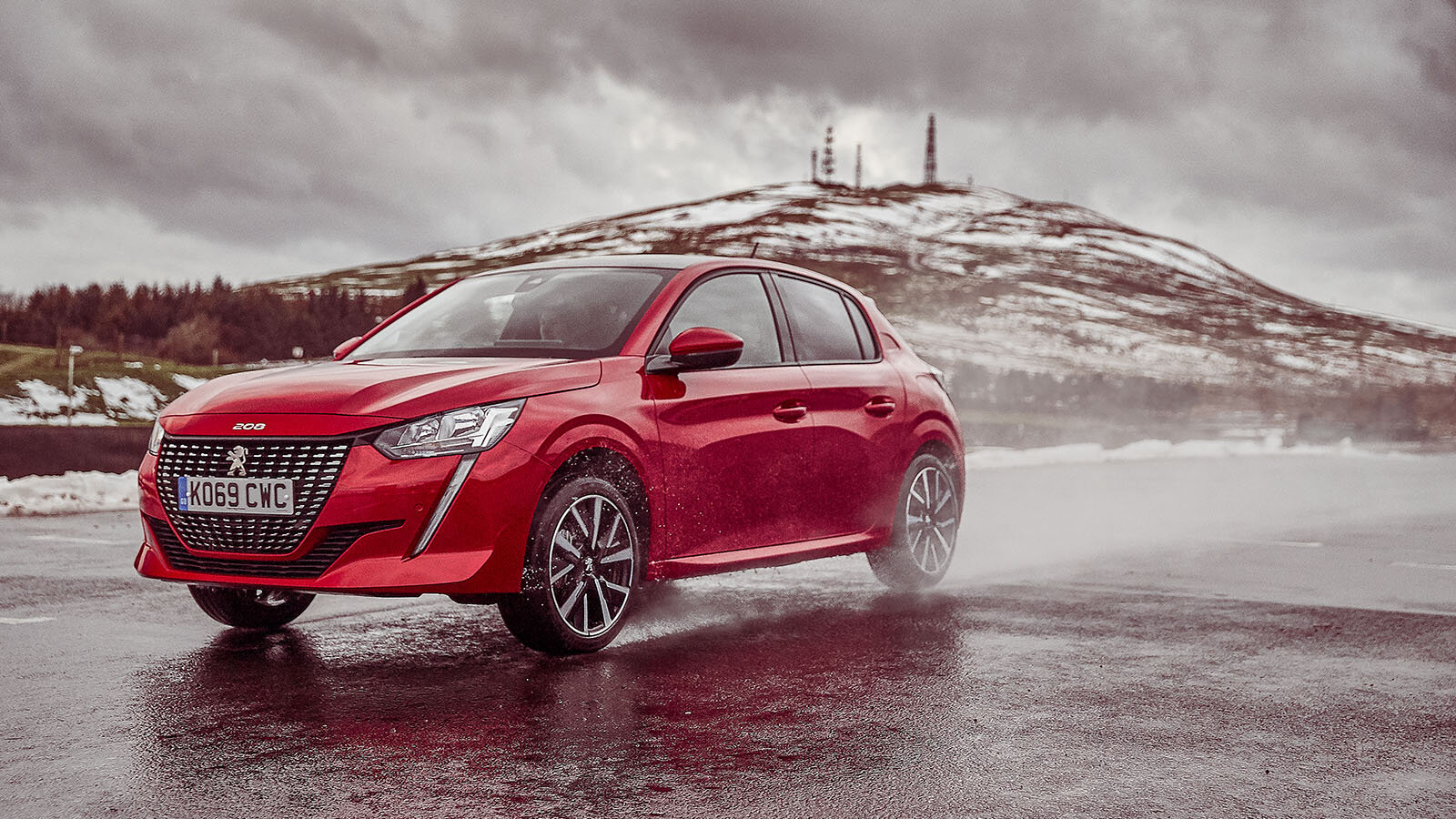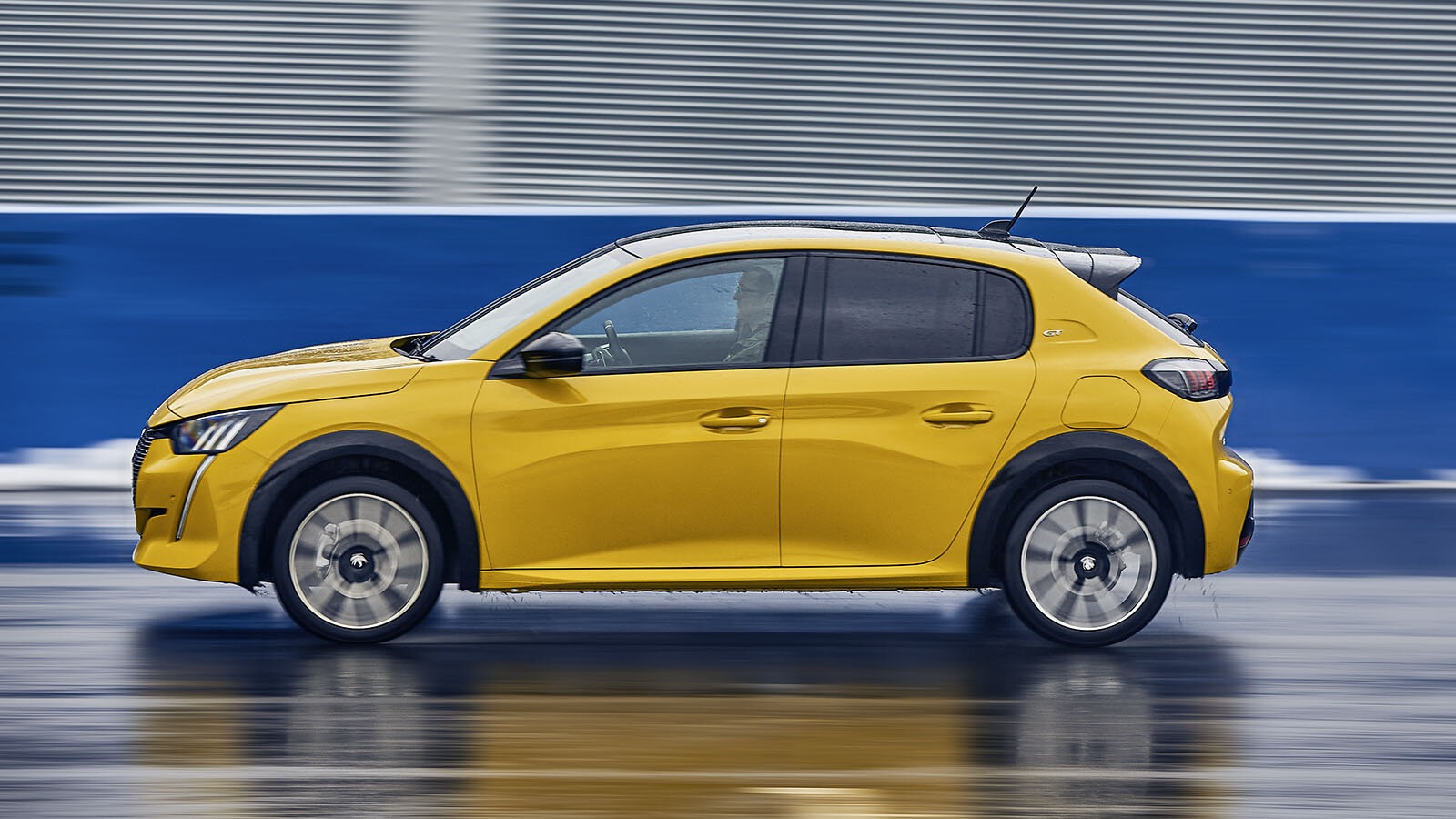Battle of the 208s at Knockhill Circuit
video & review: ELECTRIC vs petrol vs diesel. Which is fastest?
Words Chris Chilton | Photography Sam Chick
• Peugeot 208 showdown: electric vs petrol vs diesel
• Unusual test: three different engines tested in one model
• Read on for circuit lap times, and to watch the video
Peugeot’s superminis defined small car dynamics in the ’80s and ’90s, but which of the three power sources available in the latest 208 delivers the best blend of fast and fun? After driving electric, diesel and petrol 208s from Land’s End to Edinburgh, we’ve journeyed a little further north across the Firth of Forth to Knockhill Race Circuit for a final showdown to find out more.
The compact 1.27-mile layout and thrilling elevation changes will be familiar to anyone who’s watched BTCC on TV, but some things have definitely changed since Gabriele Tarquini’s famous barrel-roll. There definitely wasn’t a charging point for electric cars here back in 1994, but there is now. After charging our e-208 we’re ready to try them all on track.
We start with the diesel, which musters just 99 horsepower but returned 56mpg on our journey north. At a long, fast, flat track like Silverstone, it would be a tad drab. But Knockhill is shorter, narrower, and dotted with climbs and descents that showcase the diesel’s healthy torque output and low 1090kg kerbweight. With its relatively modest power output you have to carry as much speed as possible into each corner. It’s genuinely absorbing, and very rewarding, to tune into the exact line and shift at the right gearchange points with the precise, six-speed manual ‘box.
diesel sets the benchmark
It’s safe to say we’re not troubling Knockhill’s lap record board, but the BlueHDi – a car with no sporting pretensions, remember – certainly hasn’t disgraced itself, and crosses the line in 1m 21sec.
Next up, it’s the petrol-powered PureTech 130 with 127bhp. This flagship petrol engine isn’t quite as light as the diesel and gives away 14lb ft of torque, but in feel it’s easily the closest thing here to a traditional hot hatch.
It lunges energetically off the line, the automatic gearbox rattling through its upshifts almost as quickly as a dual-clutch auto might, before dropping comfortably into the descending right-hander with a nudge from the high-geared steering, and away up the next short straight.
Video showdown
Petrol raises the bar
While it develops its peak torque at the same 1750rpm as the diesel, it makes maximum power 2000rpm further round the virtual dial than the HDi, giving a greater spread of revs to play with. And with eight gears, versus six, plus an additional 28bhp and a more stirring soundtrack to spur you on, it’s tangibly quicker.
Let the nose drift out wide to make the most of the smooth kerbs, and let the engine revs drift up to the redline, and with little effort you can put together a tidy lap that beats the diesel’s time by three seconds. The PureTech 130 crosses the line in 1m 18sec.
The electric e-208 has the most power and torque – can it go faster? From the way it launches towards the first corner, the signs are good. From the way it moves into that corner under braking, they’re maybe less so. Not that it’s messy exactly, but there’s no disguising the extra 300kg of mass compared with the PureTech petrol. But at least that mass is located low in the car, which helps limit bodyroll. And the regenerative braking system’s slightly unnatural on-road pedal feel isn’t a problem on the track when you’re only ever asking for maximum retardation.
An electric shock
The chassis feels less responsive than the petrol’s when asked to switch direction, and it wants to run a little wider under power. But it soars once the corners open out, and down the straights it leaves the others standing, only just running out of steam right at the end of the start-finish straight. There’s no worry about being in the right gear – there’s only one – or waiting for the motor to find its sweet spot in the rev range. It’s too close to call from the driver’s seat but the stopwatch shows 1m 17sec, one second quicker than the petrol.
And it’s the cheapest to run, costing even less than the diesel for each mile driven. Running costs were always a big diesel selling point, but the HDi’s ability to travel huge distances without stopping means it still has a USP. For us, though, the frugal petrol comes so close to diesel economy, yet sounds better and is so much more fun, making it a very smart buy.
But the e-208 has proved a bit of a revelation. It’s not quite as nimble as the petrol, but if you want something that’s mischievously rapid, incredibly refined, costs pennies to run, and, with a bit of planning, can hack it on a cross-country road trip, the e-208 could be the pick of the range.
Prize draw: win your own Peugeot road trip to a boutique hotel
Read our electric 208 road trip, from Land’s End to Birmingham
Petrol 208 offers the most traditional fun, but it’s not the fastest round Knockhill
The track verdict
Electric Peugeot e-208
1min 17sec
Quick off the line, fastest down the straights, best lap time
Petrol Peugeot 208 1.2 PureTech 130
1min 18sec
Traditional hatchback driving pleasure in an ultra-modern package
Diesel Peugeot 208 1.5 Blue HDi
1min 21sec
Slowest lap, but fun, light and agile; not your typical diesel









